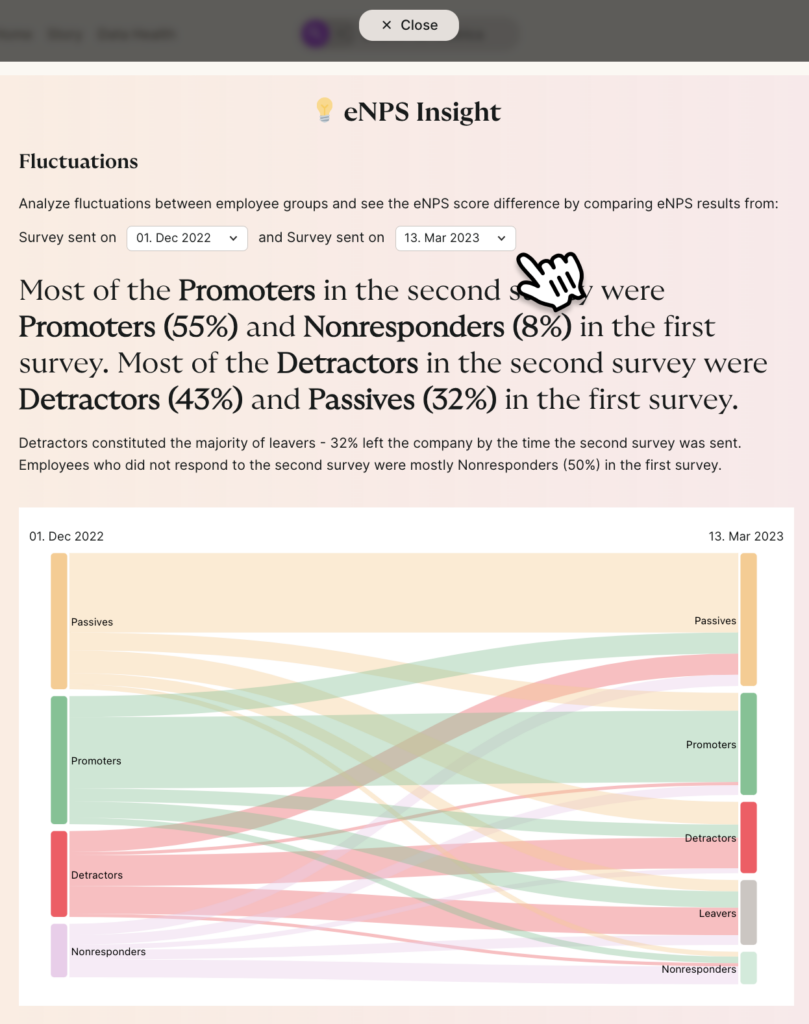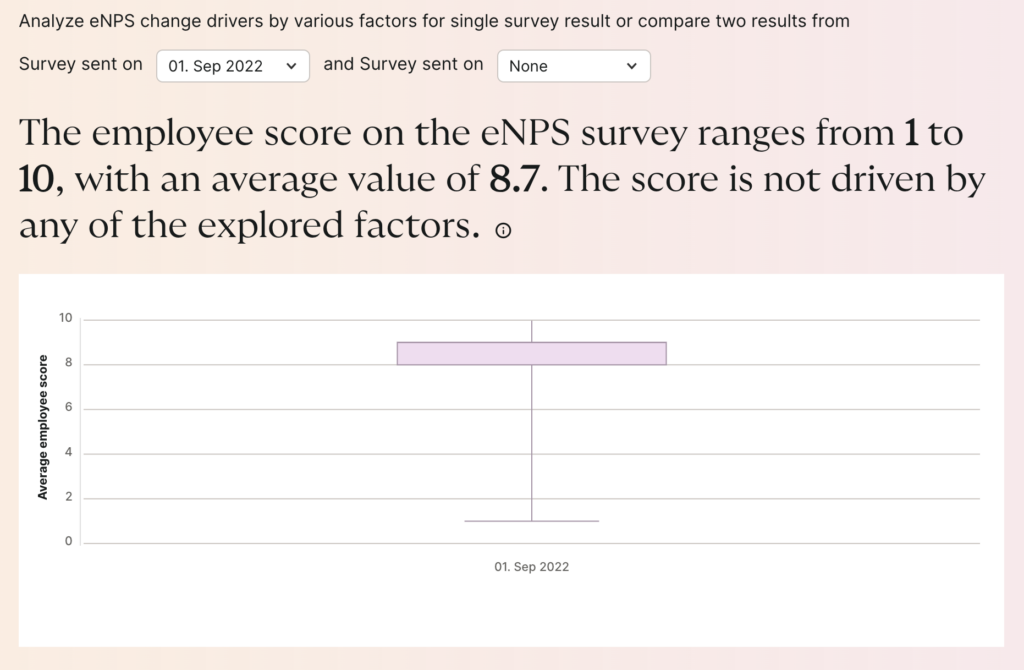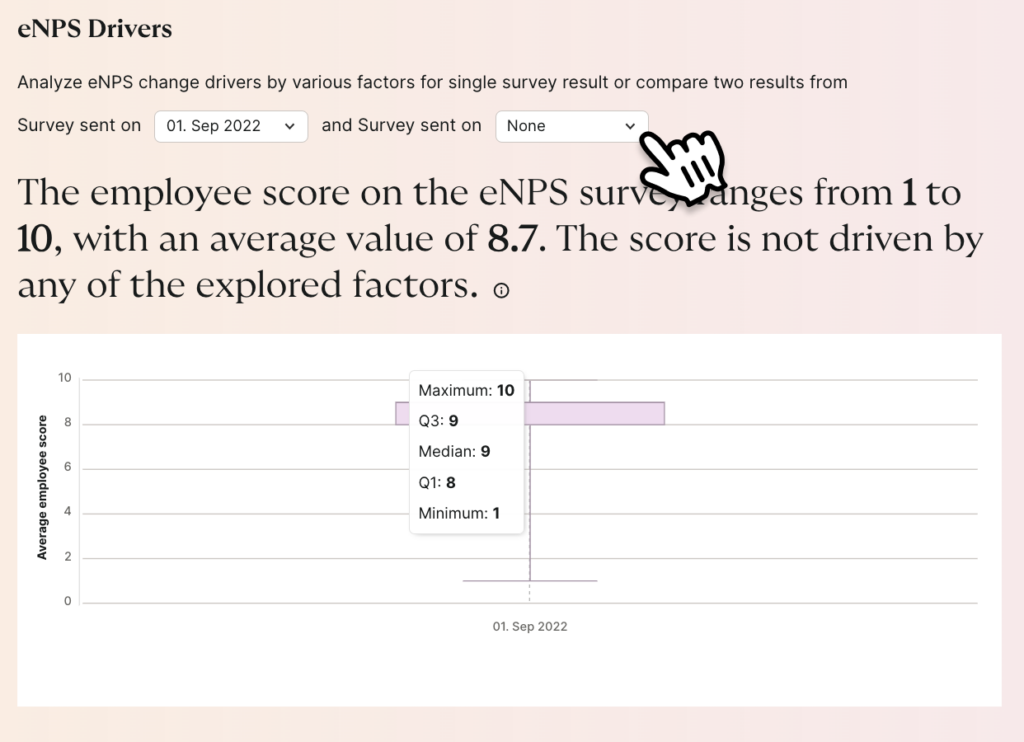Being able to conclude which factors are linked to employee loyalty is an important step in establishing a work environment which benefits employees and drives their engagement. Our new insight offers you a unique view into the much used loyalty metric — Employee Net Promoter Score.
What is Employee Net Promoter Score?
Employee Net Promoter Score (eNPS) — often regarded as a single loyalty metric a company needs — is a simple score derived from one question: “How likely are you to recommend your employer to others as a place of work?”.
Employees give their scores on a 0-10 scale, and the final eNPS is calculated by subtracting detractors (anyone with a score lower than 7) from promoters (anyone with a score larger than 8). Passive employees (those with a score of 7 or 8) are often disregarded in this analysis.
Even though eNPS paints a picture on employee engagement, loyalty, and their turnover intentions, it falls short when it comes to understanding what is driving employee behavior on this simple survey.
Our new insight tackles that exact problem — identifying factors associated with employee net promoter score and the change in this score between surveys.
How does the eNPS Insight work?
Our eNPS Insight offers you a view into how different eNPS groups (promoters, detractors, passives) change between different surveys, as well as what is driving employees’ scores and change in scores between two eNPS surveys.
Observing how the structure of eNPS groups change is crucial for understanding if employee concerns are being heard and addressed. Having the same distribution of these groups across multiple surveys does not necessarily imply consistency in employee perception of the work environment – it is quite possible that each employee changed their score on the second survey, while the overall distribution stays the same. Our insight offers you a comprehensive way of looking at how these groups change over time.

Understanding which factors are associated with eNPS is crucial in establishing a work environment that drives employee loyalty and engagement.
The second part of the eNPS Insight offers you just that.
In the background, we test how employees’ scores are associated with different factors, such as a manager leaving the company, the size of the team, the number of salary hikes, salary hike amounts, management span of control, and others.
If we detect factors associated with employee scores, we surface for you an informative overview into which factors you should focus on.

If you want to know which factors are driving change in employees’ scores between two different eNPS surveys, you can do that by exploring two distinct surveys.


How to access the eNPS Insight?
The good news is that there are just two prerequisites for accessing eNPS Insight on the Orgnostic platform — you need to send at least one eNPS survey and to use our Pro plan that unlocks insights
After collecting responses, you can access this Insight through the Home Page or by opening the eNPS metric in the Talent Management chapter of your Story.
Find out more by watching our comprehensive tutorial on how to use the eNPS Insight:
Which other insights can I find in Orgnostic?
Our Insights are constantly growing. We offer you Talent Acquisition Insights that can help you to improve your hiring pipeline by identifying stages with unusually high candidate drop-off rates, as well as candidates that spend too much time in a specific recruitment stage.
You can also take a look into factors that are driving turnover in your company, as well as whether there are salary differences between male and female employees in your company.
All these Insights are powered by your data, and that is why we also introduced Data Health — a tool for detecting which HRIS and ATS fields need your attention.
The eNPS insight is already available to customers on the plan including Insights and Surveys and who have also run at least one eNPS Survey. If you’re an Orgnostic customer and want to get started with eNPS insight — reach out to our Customer Success team.
Curious to explore eNPS and other Insights at Orgnostic?
Book your personal walkthrough →